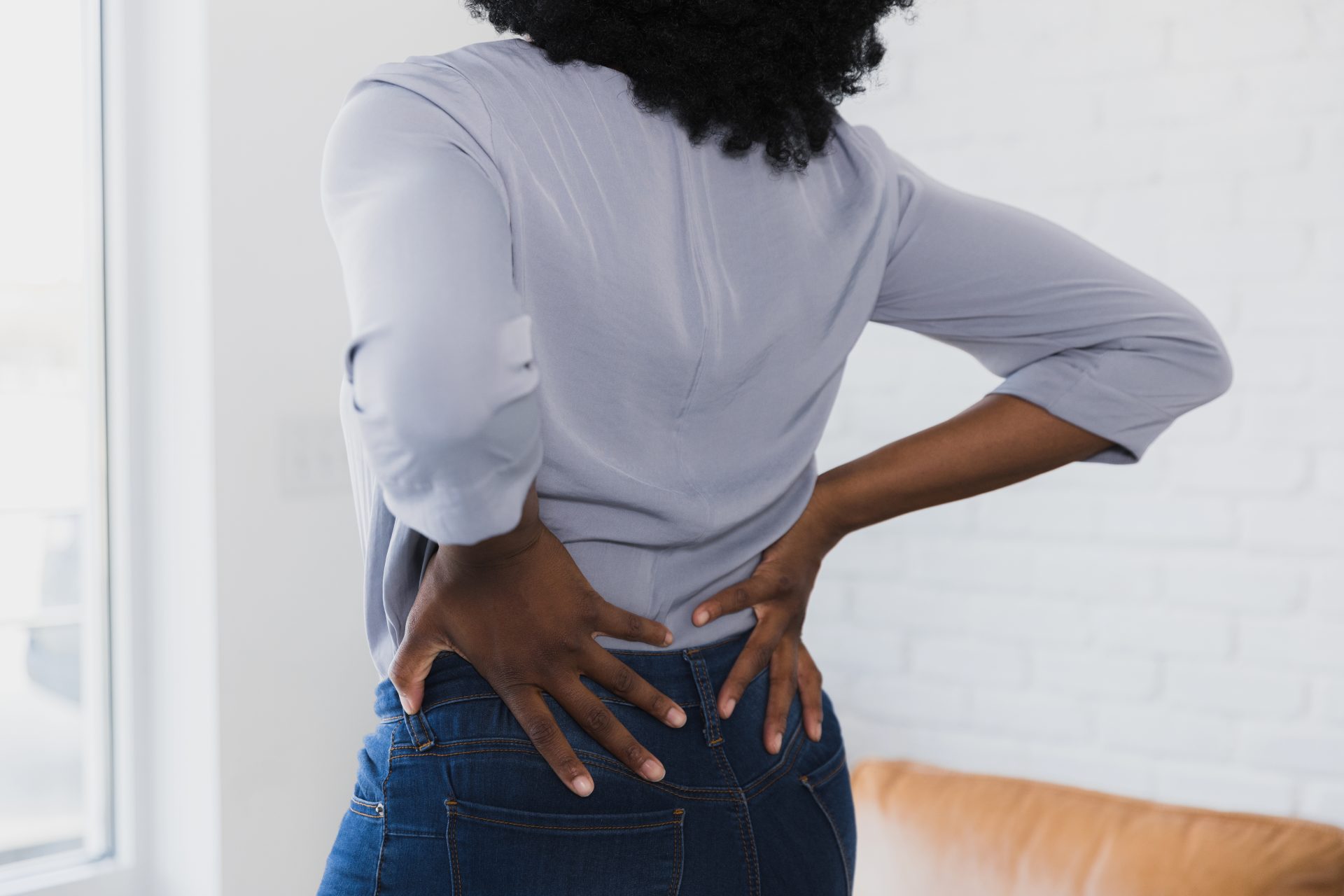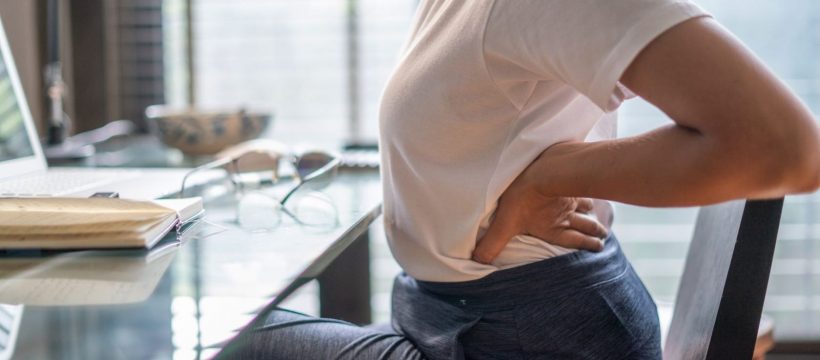The gender gap doesn’t just affect your pay packet – it might be the reason for your lower back pain too.
Part of growing up is realising that our bodies will never be as nimble as they were when we were fresh-faced teens. And you know what? That’s OK. While it’s a blessing to get older, have you noticed how many memes there are on your timeline about back pain?
It’s one of the curses of adulthood, with up to 23% of the world’s adult population suffering from chronic lower back pain. A recent study showed that lower back pain prevalence increases with age (wahoo!) and is higher in women than in men.
You may also like
Back pain: “Adding these 4 hip mobility exercises to my workout routine reduced my lower back pain”
In general, lower back pain can be caused by injuries like ruptured or slipped discs, muscle strains or more chronic conditions like arthritis, but there are also a few gender-specific reasons why women may be suffering more.
5 reasons women might be living with lower back pain
PMS
Around 90% of people who have periods have experienced PMS (premenstrual syndrome) in the lead-up to their monthly bleed, which can cause such delights as mood swings, bloating, cramps, fatigue and… lower back pain.
“Studies show that levels of inflammatory markers are all elevated during this part of the cycle – these are specific proteins and chemical messengers that mediate the process of inflammation,” explains Dr Deborah Lee from Dr Fox Online Pharmacy.
“At this time of the month, high levels of hormones oestrogen and progesterone also increase vascular permeability, causing tissue swelling. When this occurs in the spine, swelling develops between the spinal nerve roots, which can be painful.
“Also, the heightened anxiety and depression that can occur in PMS are likely to enhance the perception of pain.”

Painful periods
Dysmenorrhoea is the medical term used to describe painful periods, which affects 45-95% of the menstruating population.
“The pain is usually felt as a cramping in the lower abdomen, but it can radiate through the lower back and into the tops of the thighs,” says Dr Lee.
“As dead endometrial cells are sloughed off inside the uterine cavity, specialised prostaglandins are released, to help the uterus expel menstrual fluid.
You may also like
Posture correctors: are they actually good for your back?
“Prostaglandins are well known to cause pain, and the contraction of smooth muscle in the uterine wall can also cause pain in the back muscles.
“In a 2015 study on a group of 18- to 25-year-old women, 84% said they experienced dysmenorrhoea, with 16% saying they had back pain.”
Pregnancy
It’s no secret that brewing a miniature human and lugging it around for nine months can cause back issues.
“The growing baby means women are carrying extra weight, which changes their posture and how they mobilise, all putting pressure on the back and lower back,” explains Dr Hana Patel, GP specialist in women’s health and a GP expert witness.
“The hormones that our bodies produce during pregnancy can also cause back and joint pain, usually from the second trimester until delivery. Up to 80% of women complain of back pain at some point in their pregnancy.”
Perimenopause and menopause
“During the menopause and perimenopause women experience a change in their hormone levels, including oestrogen,” advises Dr Patel.
“During the menopause, a decrease in oestrogen and subsequent reduction in collagen tissues around the discs in your back can lead to more severe lumbar disc degeneration, which causes back pain. Low oestrogen levels can also affect the ligaments in our bodies, which is another reason why women can get back pain during this time, and other joints can be affected too.
“A common symptom of the menopause is back and joint pain.”
Anxiety and depression
The curse of the gender gap is prevalent when it comes to mental health – women are almost twice as likely to experience anxiety and depression than men, with possible causes being hormonal fluctuations and differences in brain chemistry. Studies show a correlation between anxiety, depression and back pain in women in particular.
“Stress, anxiety and depression can all contribute to back pain, and while some of the mechanisms are unclear, we know that these emotions can co-occur with changes to the nervous system,” explains Helen O’Leary, physiotherapist and clinical director at Complete Pilates.
You may also like
How to decompress your spine to reduce back ache and pain
“Our threshold for pain signals becomes lowered when we’re experiencing a significant low or anxious mood. During chronic stress, adrenaline and cortisol hormones can sensitise the nerves that are responsible for pain signals.”
Are certain painkillers better than others for lower back pain?
It goes without saying that you should seek advice from your GP if you’re concerned about any lower back pain, but if you’re looking for some quick pain relief, head to the pharmacy.
“Ibuprofen is effective in easing mild to moderate pain, working to reduce hormones that cause pain and swelling in the body,” advises pharmacist Abbas Kanani from online pharmacy Chemist Click.
“Some people find ibuprofen better than paracetamol for back pain, and it also comes as a gel, mousse or spray that you can rub into your skin.
“Paracetamol is also effective in relieving back pain and is safe to take during pregnancy and while breastfeeding, at recommended doses. If these don’t work, the strongest painkiller available over the counter in the UK is co-codamol.
“However, speak to your pharmacist or GP before taking any of these medications.”
How to exercise for lower back pain
“One of the simplest things you can do is to go for a brisk walk: 10 to 20 minutes is ideal,” advises O’Leary. Studies also show that mindfulness-based stress reduction (MBSR) can be effective in improving symptoms.
If that doesn’t help, O’Leary says there are lots of simple floor-based exercises you can do that are great for relieving back pain, including:
Pelvic tilts
Bridge pose
Glute stretch
Child’s pose
Knee hugs
“If you’re experiencing a new episode of back pain and can tolerate these exercises, try to do some of them two or three times a day.
“Some discomfort is fine when you do the exercises – on a scale of zero to 10, if your pain is a four or less, then you can continue. Over time they should feel quite relieving.
“If pain persists, consult your GP or physio.”
Image: Getty
Source: Read Full Article
